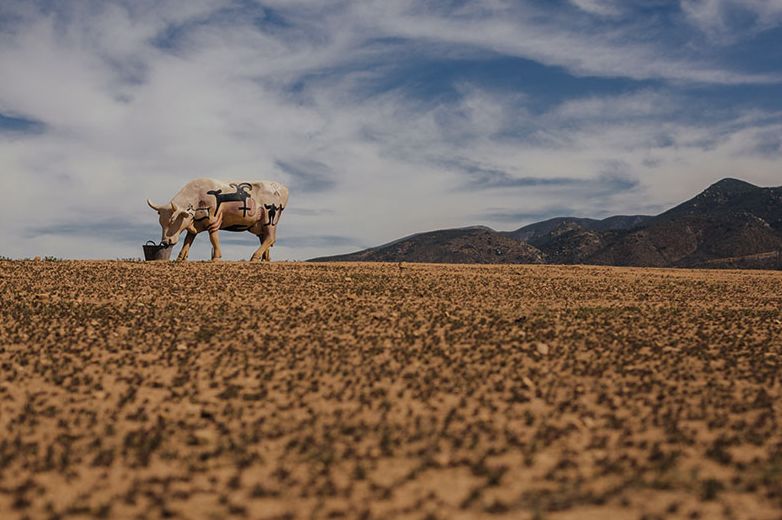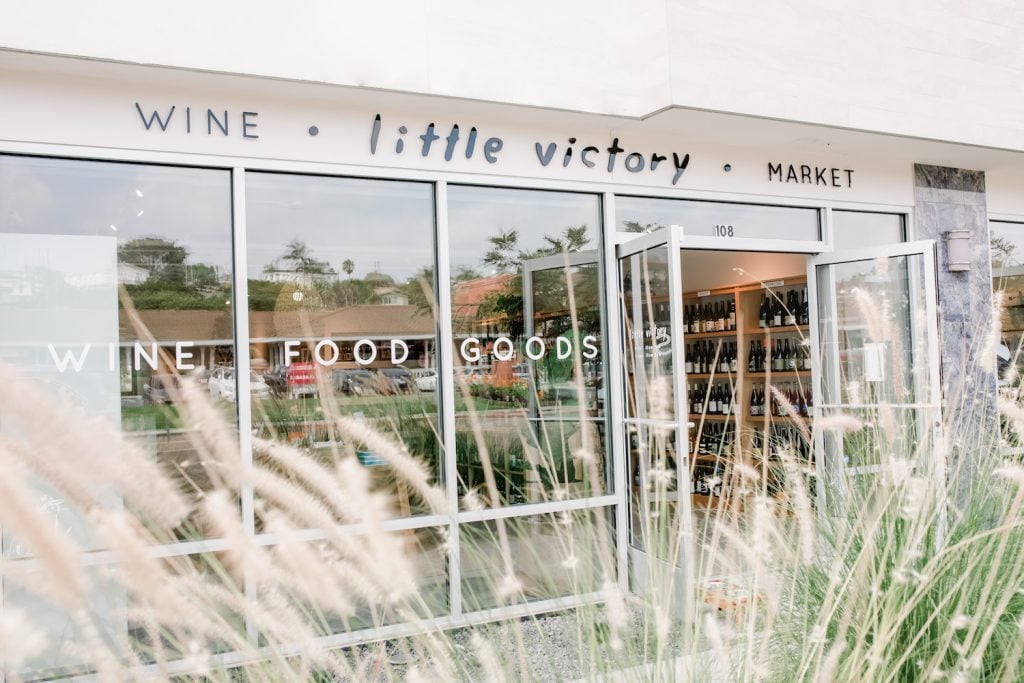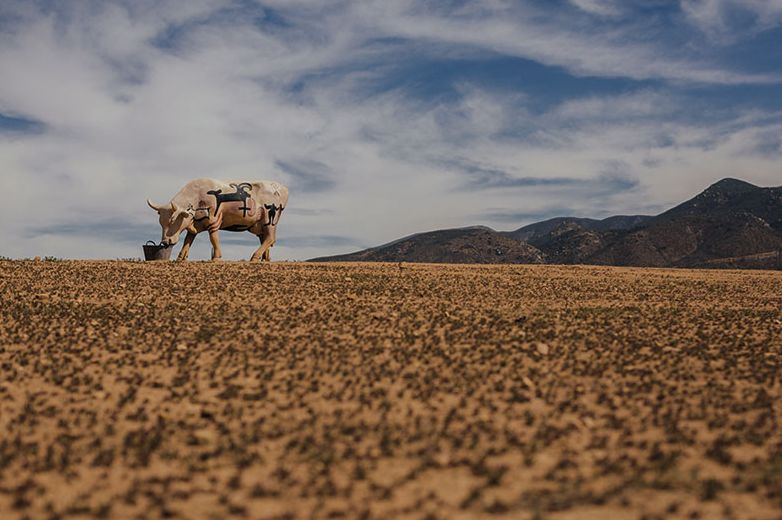Some people don’t go to Tijuana because of the smell. Some don’t go because of its violent reputation. Some don’t go because of an unnamable, generalized fear.
Maybe that’s not such a bad thing.
The cover story of this month’s San Diego Magazine is my account of going back to Baja for the first time since all the blood. I had written off Tijuana. I knew the violent years were over. I’d seen the crime statistics (you have a greater chance of getting murdered in Chicago). I just had a fear echo.
As a kid growing up in San Diego, there was no shortage of slander about Mexico. The country was like that reclusive man in your neighborhood with the limp and the dead lawn who was known to bury children in his backyard. Adults told us bad men lurked on the other side of the border fence, waiting for white people with nice shoes. They pointed guns at you until you jumped in their sack. Then they called your family and asked for money. You might make it home. All of your fingers would not.
I started sneaking down there in 1987 when I was 14. At 4’11″ and still pre-pubescent, I had all the manliness of a Christmas elf. But I was able to get a fake ID at a small store in Downtown San Diego whose relationship with the Better Business Bureau was probably complicated. I drank buckets of Coronas at Peanuts & Beer, dancing to Salt N Pepa under black lights next to 18 year-old SDSU freshmen and menopausal hookers. I showed Tijuana far too little respect, partially because it didn’t seem interested in much.
I never got drugged or kidnapped. I did get shaken-down by two police officers. Paid one off with $6. The other got $50 after he took issue with the Swiss Army Knife in my pocket and told me I was going to jail forever and ever.
But I also saw another side of Baja. We’d drive 160 kilometers south of Ensenada and turn down nameless dirt roads until we hit water. We parked our trucks on the sand, camping and surfing for days. Just us, a wet horizon and sweet boredom. Gentle old fishermen traded us lobsters for t-shirts, knowing full well we were getting a deal in the exchange. The locals at the occasional side-road tienda welcomed us with warmth, looked after us.
That part of Baja seemed like a home. Like people had roots, a sense of place and pride. Whereas no one—not the cops or the curio shop owners or the bat shit crazy white people—seemed compelled to honor or preserve or make Tijuana better.
Then Nortec Collective happened. That band of Tijuana DJs, musicians and artists stole the spotlight back from the donkeys painted like zebras (zonkeys). My San Diego art friends moved to TJ. Partially because rent was $200. Partially because TJ was the only thing south of L.A. that was remotely edgy or artistic.
And then 2006 happened. The Mexican government stopped doing blow at parties with the cartels and started arresting them. That seemed like great news, but it wasn’t. When you remove the big dog from the yard, the smaller dogs fight over the bone. Up-and-coming cartels fought in the streets for control of the crime market. Tijuana became a bloodbath. Kidnapping became municipal sport.
Now, the dust has settled and—lo and behold—Baja is one of the most buzzed-about food and drink destinations on the planet. “Baja Med” is the name of its famous cuisine (even if some locals and chefs chuckle at it). News headlines about the food scene in the warm-climate region tend to use the word “hot” or “sizzling.”
Two years ago, star Tijuana chef Javier Plascencia told the New Yorker and the New York Times that he wanted to turn Baja into an international food destination. Just like San Francisco or Mexico City. Two months ago, photographer Jaime Fritsch and I set out on a series of day trips to see how far Plascencia and his colleagues had come.
I am a very different sort of tourist than I was in 2006. Which is good, because Baja is a very different sort of tourist destination. The pattern of consumption is moving away from the excessive intake of mediocre things, and more toward moderate intake of good things. Less tequila poppers, more snifter Mezcal.
After spending time there speaking with its innovators, I left with so many reasons why Baja’s food, wine and culture is terribly, terribly exciting. But the one idea locals expressed again and again goes something like this:
The violent years were awful. But this cultural surge might not have happened without them. When tourists stopped coming, Baja created a culture for its own people. They stopped catering to tourists’ wants and desires, and catered to their own. Ironically, that’s what’s made it especially attractive. After all, who wants to arrive in Paris only to realize it’s been designed to live up to American stereotypes of Paris (painters in berets talking snootily about sex)?
I want to experience Baja on its terms, not my own.
My story, “The Baja Moment,” ends with an anecdote some people feel I shouldn’t have told. Driving back from Valle de Guadalupe, we were pulled over by a police officer in Tecate. He said we didn’t come to a complete stop and we’d have to go down to the station. We were intimidated, missed our families, and didn’t know how to properly handle the situation. So we asked if we could take care of the ticket right there. We paid him off.
I was incredibly bummed. It’s my job to tell a true, firsthand experience as an American writer returning to Baja. And now he forced himself into my experience. When I relayed the story to the Baja tourism director, he was livid. He asked for his badge number (I didn’t think to get it), and told me about a hotline that Americans can call in situations like that. If it ever happens again, maybe I will.
But a crooked cop won’t keep me away from Baja. Neither will the fact that in some parts, Tijuana smells like shit. As more than a few locals told me: Baja isn’t for everyone, and that’s OK.
It’s definitely for me.
I hope you enjoy the story. I researched it exhaustively and relay a lot of statistics and ideas from the people who are creating Baja. It’s not meant to be a complete history or almanac. There are so many innovators and important people who helped shape the region’s food and drink scene that I wasn’t able to include simply due to space and time.
I start the story with Derrik Chinn, an American journalist living in Tijuana who has been bringing Americans down to experience the city in a real, non-tourist way for years. I felt apprehensive that the first voice you hear in a story about the region is a non-Mexican. But I wanted to organize the story as the typical American might experience it themselves—start through another American’s eyes—and then get to know the natives and influential people who have been building their native culture for a long, long time. Plus, Chinn is an eloquent, passionate participant in Baja culture.
The hardest part for me with this story is limitations. I could have written a book. I ended up with 5,000 words. But we also needed space in the magazine for Jaime’s beautiful photos. So I cut it down to 3,000 words. Fernando Gaxiola, owner of Baja Wine + Food and the largest importer of Baja wines, has a fascinating perspective on the wine regions that I need to tell. One of my favorite humans in Valle de Guadalupe—Natalia Badan, a sort of spiritual mother of the Valle—isn’t included here at all. Javier Plascencia’s phenomenal assistant Diana Jimenez was basically our tour guide and gave us invaluable insight. We had to cut it for space.
I had so many insightful conversations with people in Baja. We would talk for a half hour, maybe an hour. Then it was my job to bottle our entire conversation into one paragraph. Then take that one paragraph and bottle it into a sentence or two. There are so many great truths and ideas in the story; and yet so much is lost, too.
Over the next few weeks, I’ll present some of those ideas and interviews on SD Food News. Because they were so insightful and helpful to understanding the region, and I don’t like wasting people’s breath.
I’d like to thank everyone who took their time to help me on this story and yet who aren’t included: Diana Jimenez, Fernando Gaxiola, Jay Porter, Antonio from Life + Food and Club Tengo Hambre, Genaro Valladolid (Bustamante Realty Group), Flor Franco and Natalia Badan.
Thanks for reading. Now go to Baja.

Baja. Desert magic.
Jaime Fritsch















